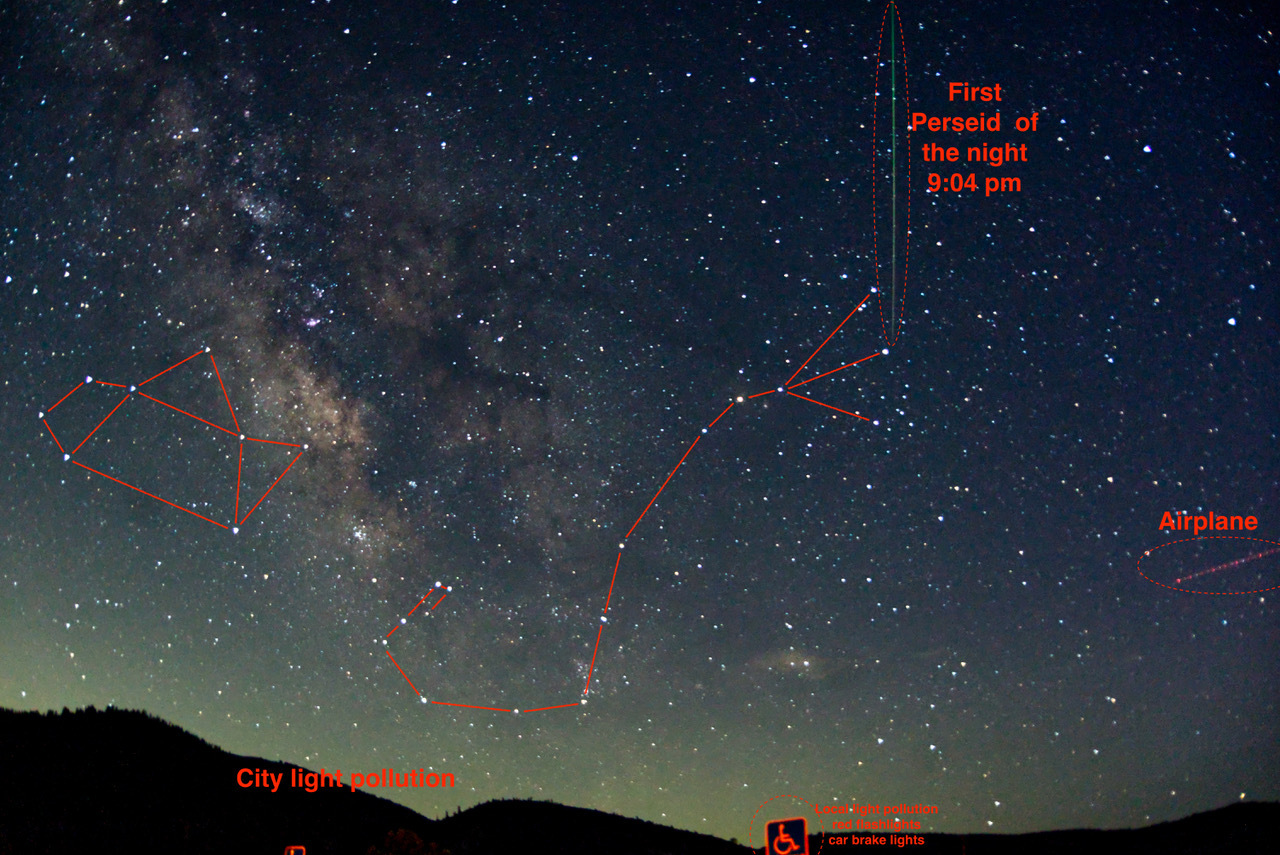Some VCAS members traveled to the Chuchupate ranger station to observe the peak of the Perseid meteor shower on Aug 12.
There was a HUGE crowd. Cars arriving after me had to park along the road. The lot was full by 7:15pm.
My first photo of the evening shown below just happened to catch a meteor.
Most of the early evening was used to talk with the many families attending about VCAS and show them globular clusters, nebula, Saturn and later Jupiter.
I was glad to have brought along a 150mm f5 refractor.
About 1:30 am the crowd was mostly gone and I started near continuous 20 sec exposures with an 18mm f3.5 lens.
This gave a 66.25 x 44.85 degree field or about 15% sky coverage but the lens had very distorted stars away from the center.
Shifting my target area to try and chase where I thought the meteors were most prevalent proved fruitless.
Several exposures were discarded because of car lights but I kept 469 or about 156 minutes of sky samples.
Results of the 469 frames:
- Meteors 19 That’s about 4% of frames (all meteors seem to be members of the Perseid group)
- Frames with airplanes 46
- Frames with satellites 75 ... thanks Elon ?
- Frames with glints 2
A glint is a brief singular bright flash never lasts more than a few seconds.
I see them much more often now. Probably satellite solar panels briefly reflecting sunlight at just the right angle.
The image below of the first meteor of the night and some of the light pollution problems.
Dennis Willett
VCAS VP of observations

